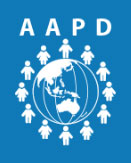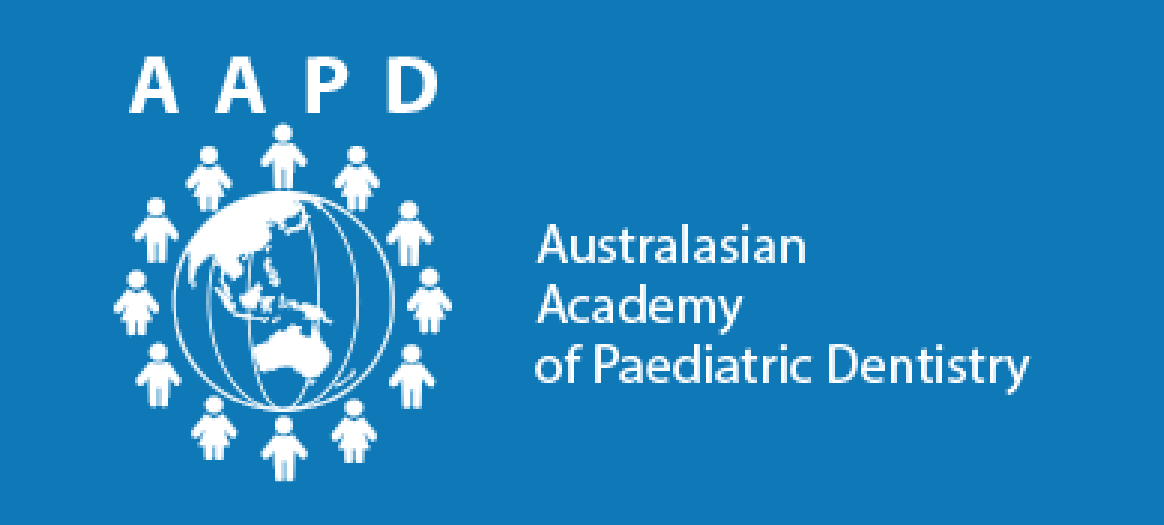Bengt Magnusson Memorial Prize winner, Dr Vanessa Cho
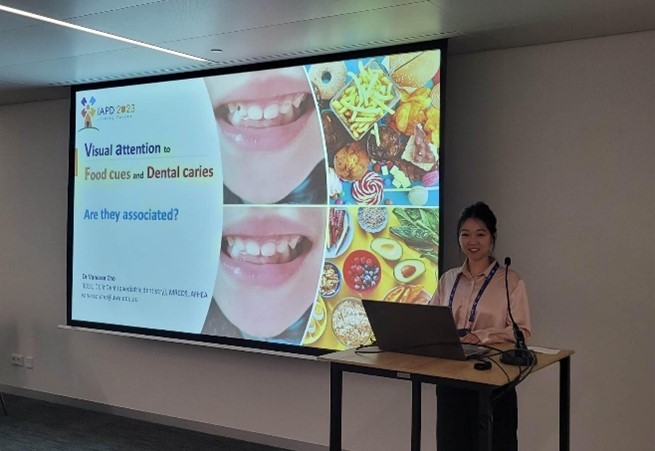
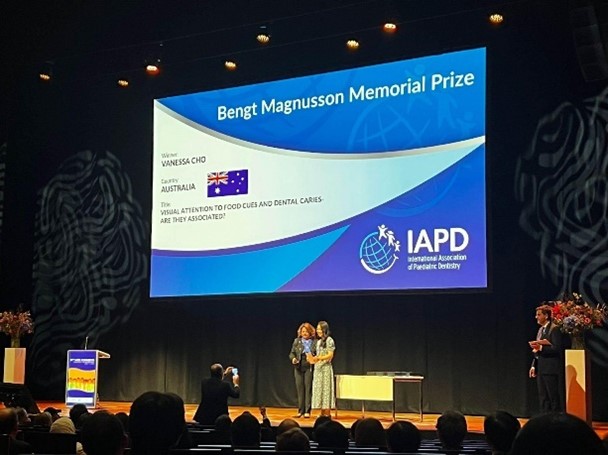
The Bengt Magnusson Prize is awarded by the IAPD for the best submitted essay and presentation at their annual Congress. It is presented in memory of Professor Bengt Magnusson of Göteberg, Sweden, a founder of Paediatric Dentistry and a former member of the IAPD until his death in 1981.
I received the award for my study titled Visual Attention to Food Cues and Dental Caries – Are they associated?
My essay explored children’s food cue reactivity and their correlation to dental caries experience. Following a dental examination, research participants were classified as either 1) children with dental caries and their parents, or 2) children without dental caries and their parents.
Children and their parents were calibrated to an eye-tracking device to ensure standardisation. The participants viewed matching images of healthy and unhealthy food cues while an eye-tracking device tracked their eye movements.
Overall, children and their parents noticed unhealthy food cues first (time to the first fixation), irrespective of the screen position.
The visual attention of children without caries and their parents to food cues was similar. Regardless of caries experiences, children and their parents exhibited an equal share of the total time for healthy and unhealthy food cues. However, the total time spent on unhealthy foods correlated better between children with caries and their parents.
The preliminary findings establish the link between food cues and dental caries. Future studies should explore this association using standardised measures and reporting to confirm this link.
Morita Case Report Award winner, Dr Stephanie Shields
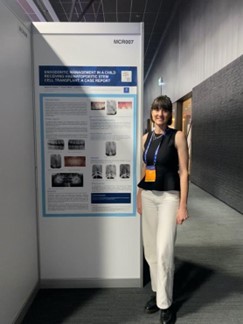
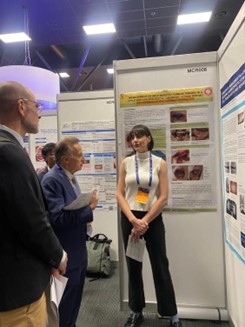
The Case Report Award is presented by the IAPD for the best case report at their annual Congress.
As a final year postgraduate student at the University of Melbourne I was lucky enough to travel to Maastricht to present a poster for the Morita Case Report Award at the 2023 IAPD Congress. This involved preparing an abstract and a poster, with a five-minute oral presentation and questions from the examiners.
The abstract I submitted was regarding a 15-year-old patient diagnosed with myelodysplastic syndrome who I managed with our team at the Royal Children’s Hospital Melbourne (RCH). She was seen as a new patient, referred from the oncology department for a dental clearance prior to haematopoietic stem cell transplant (HSCT).
Clinical and radiographic examination revealed an asymptomatic buccal draining sinus secondary to a non-vital #11 tooth which was traumatised several years ago after an accident on a waterslide. The family reported that the tooth sustained an uncomplicated enamel dentine fracture and was restored at the time by a local general dentist.
Two weeks prior to commencing anti-neoplastic therapy the #11 was extirpated. Due to the patient’s pancytopenia, antibiotic prophylaxis was recommended by the oncology and haematology departments. #11 was extirpated and an intracanal medicament of calcium hydroxide was placed with a two-layer temporary restoration.
The soft tissue lesion persisted at the 10-day review but had significantly reduced in size. As it was asymptomatic with evidence of healing, albeit delayed likely due to neutropenia, it was decided in consultation with the endodontist that no further dental treatment was required to deem her dentally fit for transplant. HSCT and associated treatment were then completed at RCH. A year post endodontic treatment the patient remained asymptomatic and there was evidence of radiographic healing at the apex of the tooth. Tooth #11 was obturated 14 months after the initial extirpation and following haematopoietic recovery.
Guidelines indicate ideally endodontic treatment is completed prior to commencing HSCT in cases presenting with clinical signs or symptoms. In this case however, despite the persistence of clinical signs of odontogenic infection, no conversion to acute pathology during periods of immunosuppression was noted and on review soft and hard tissue healing was achieved.
This case of a chronic apical abscess in an adolescent receiving HSCT demonstrates successful management with calcium hydroxide medicament. The poster presentations were delivered to the IAPD judges and a small group of attendees congregating in the poster area, with robust questions from the examiners. The IAPD judges appreciated our efforts to advocate for the patient’s quality of life and retain the #11.
Morita Prize winner, Dr Caitlin Hurley
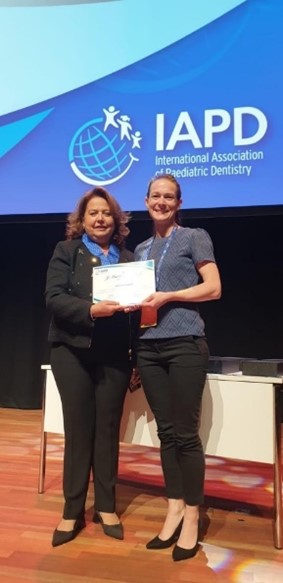
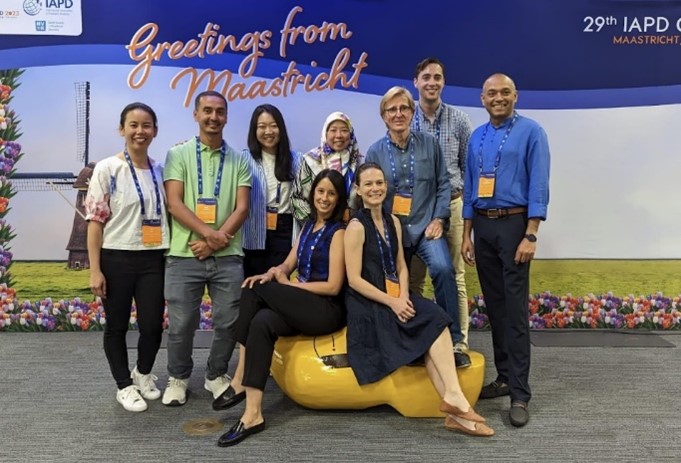
The 29th Congress of the International Association of Paediatric Dentistry was a fantastic opportunity to catch up with the paediatric dental community and enjoy the European summer!
It was a surprise and career highlight to be awarded the Morita Prize for best research poster presentation at the congress.
At the congress I presented a poster titled Speaking of teeth, are they vital for speech? on the research project I have completed for my DClinDent.
The aim of the project was to explore the impact of primary maxillary incisor extractions on children’s speech – a topic with almost daily relevance to practising paediatric dentists.
As a dual qualified speech-language pathologist and dentist I consider myself privileged to have been positioned to see this project through from conception to completion. The project has been supervised by Prof Robert Anthonappa (University of Western Australia) and Prof Sharynne McLeod (Charles Sturt University), and I am very thankful for their guidance and support.
Preschool aged children planned for extraction of one or more primary maxillary incisor as part of comprehensive oral rehabilitation under general anaesthetic were recruited to the study. Prior to their dental surgery and at one month follow up I administered a standardised speech assessment tool which involved transcribing 80 words as the child pronounced in the International Phonetic Alphabet.
Most of the children in this sample performed below the level of typical performance for their age at their pre-operative assessment, however, there was no statistically significant change to their speech sound accuracy over the study period. The only statistically significant finding was an improvement in oral health related quality of life by parent report. Full results of the study are being prepared for publication and I look forward to seeing the papers in print.
